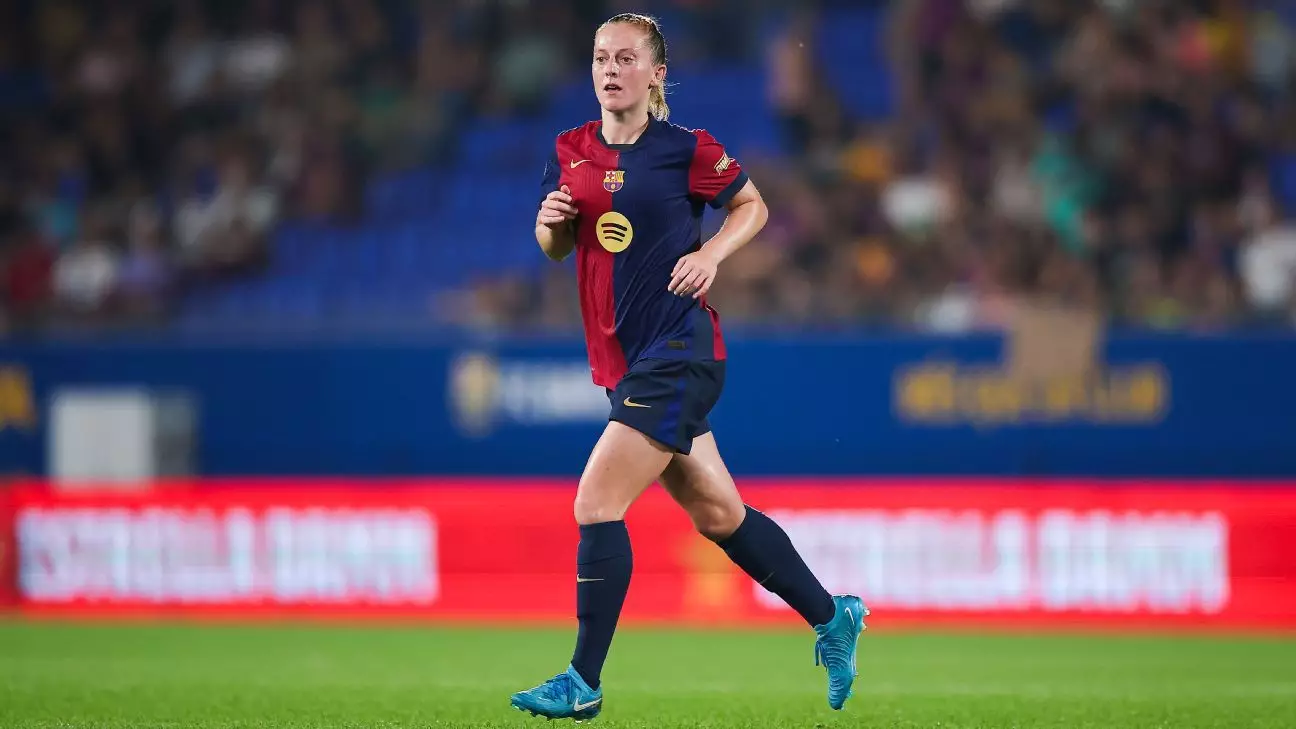The world of women’s football is increasingly resembling its male counterpart in terms of financial stakes and media attention surrounding player transfers. A recent incident involving England international Keira Walsh illustrates this evolution, particularly as Barcelona rejected a significant offer for the midfielder before the Women’s Super League (WSL) transfer window closed. While such refusals are not uncommon in football, the context and implications surrounding Walsh’s potential exit from the Catalan club offer rich insights into player value, team strategy, and the ever-growing market for women’s football.
According to reports from ESPN and various Catalan media, both Arsenal and Chelsea expressed interest in acquiring Walsh, with one particular bid potentially breaking the women’s transfer record. The rumored offer, said to be as high as €1.1 million ($1.2 million), would have eclipsed the previous record of €800,000, set earlier this year. Such financial figures underscore how clubs are beginning to view female athletes as highly valuable assets capable of influencing not just match outcomes but also the broader commercial appeal of their brands.
While big-money offers indicate that Walsh’s talents are recognized, it’s the refusal from Barcelona that emphasizes the club’s commitment to maintaining a competitive edge. Barcelona’s decision to uphold a substantial €3 million release clause further indicates their belief in Walsh’s significance to the team. This protectionist attitude may reflect a broader trend among top European clubs seeking to build or maintain a championship-caliber roster in a fiercely competitive environment.
Keira Walsh joined Barcelona in July 2022 for a then-world-record fee of €400,000 from Manchester City. Despite the impressive talent Walsh has brought to the club, her contract is set to expire at the end of the current season, leading to speculation about her potential departure. While she reportedly might be open to a return to England, there is also the prospect of her re-signing with Barcelona. The commitment from both the player and the club will be crucial in shaping the narrative of her career moving forward and determining Barcelona’s strategy in maintaining a top-tier squad.
The duality of this situation raises vital questions: How much weight do players’ commitments to clubs carry in a landscape that is rife with temptations? It also invites scrutiny into how clubs balance financial interests with competitive aspirations. With Walsh being part of a championship-winning squad that has set the standard for success in women’s football, her departure would arguably weaken a team that aims to defend its titles and compete at the highest levels.
Coach Pere Romeu weighed in on the situation following Barcelona’s victory over Real Sociedad. He firmly downplayed any rumors surrounding Walsh’s potential departure, portraying her as an integral part of the team’s structure who exhibits professionalism and commitment. Such statements are more than just media soundbites; they also reflect the necessary harmony teams require to perform at their best. If players feel unsettled or undervalued, the overall cohesion and performance of the team will invariably suffer.
Moreover, Barcelona’s refusal to entertain offers for Walsh sends a clear signal to potential suitors: building a legacy, as the back-to-back European champions aspire to continue, requires holding on to key players who have been pivotal to past successes. The emphasis on team stability could become essential as clubs navigate an increasingly aggressive transfer market, where retaining talent is as crucial as acquisition.
In the gamble of professional sports, especially in women’s football, transfer windows are crucial moments that can reshape a league’s landscape. The decision of Barcelona to reject the bid for Walsh coincides with other movements within the league, such as María Pérez’s departure to join London City Lionesses—which illustrates ambitions for promotion to the WSL, highlighting an arms race at various levels within women’s football.
As clubs like London City Lionesses strive to raise their profiles by signing world-class talent, the stakes are getting higher. Female footballers are not merely athletes; they are pivotal links in the sports world’s chain of economic activity. Therefore, how clubs manage player relations, contract negotiations, and transfer dealings will likely play a fundamental role in defining the future of women’s football over the next several years.
In essence, the situation surrounding Keira Walsh offers a compelling case study on the evolving landscape of women’s football transfers, encompassing elements of player value, team dynamics, and the ambitious drive of clubs in a rapidly expanding market. Each decision is a critical piece in the puzzle that forms the future of not only individual clubs but the sport as a whole.


Leave a Reply